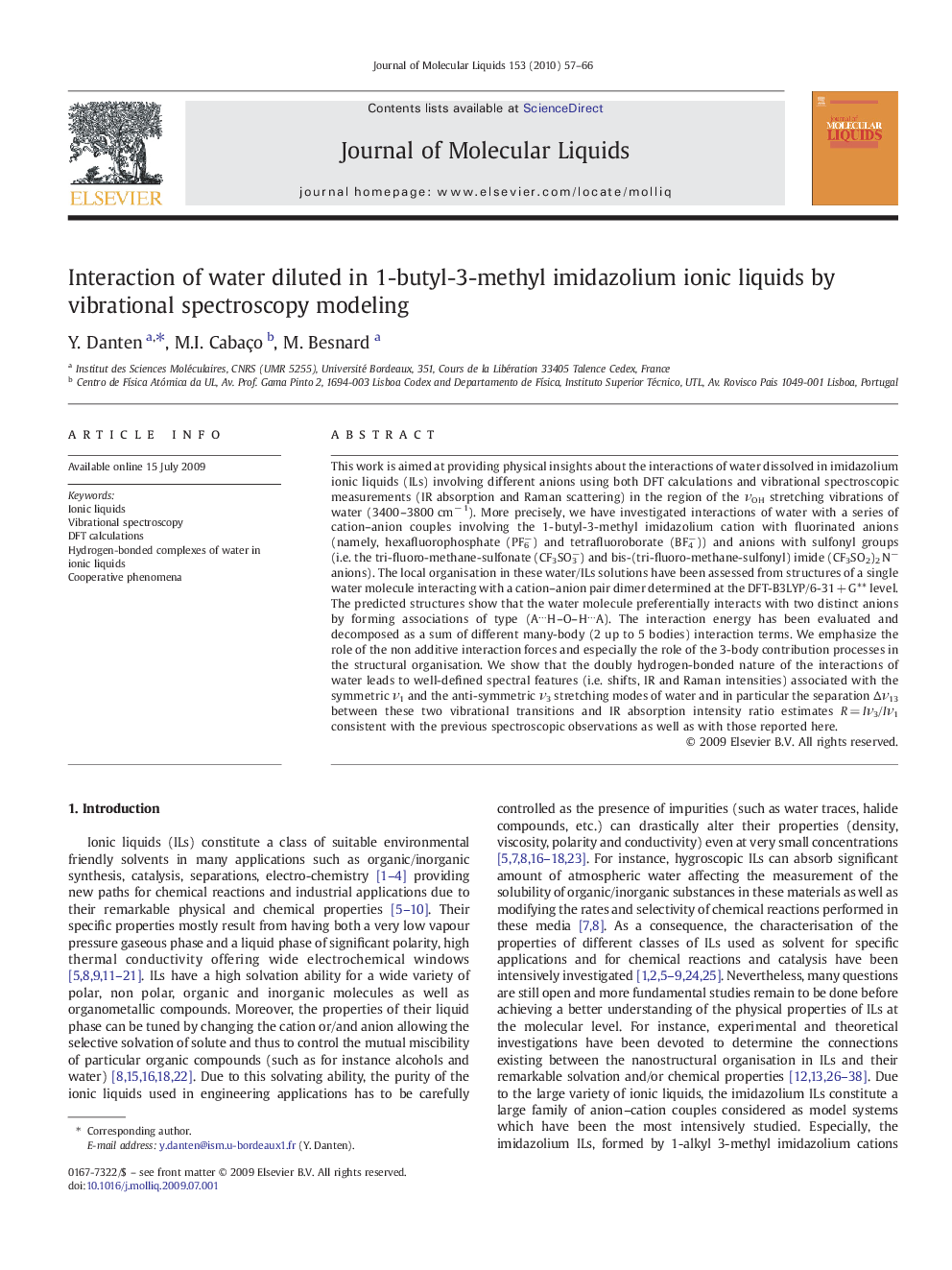| Article ID | Journal | Published Year | Pages | File Type |
|---|---|---|---|---|
| 5413018 | Journal of Molecular Liquids | 2010 | 10 Pages |
Abstract
This work is aimed at providing physical insights about the interactions of water dissolved in imidazolium ionic liquids (ILs) involving different anions using both DFT calculations and vibrational spectroscopic measurements (IR absorption and Raman scattering) in the region of the νOH stretching vibrations of water (3400-3800 cmâ 1). More precisely, we have investigated interactions of water with a series of cation-anion couples involving the 1-butyl-3-methyl imidazolium cation with fluorinated anions (namely, hexafluorophosphate (PF6â) and tetrafluoroborate (BF4â)) and anions with sulfonyl groups (i.e. the tri-fluoro-methane-sulfonate (CF3SO3â) and bis-(tri-fluoro-methane-sulfonyl) imide (CF3SO2)2 Nâ anions). The local organisation in these water/ILs solutions have been assessed from structures of a single water molecule interacting with a cation-anion pair dimer determined at the DFT-B3LYP/6-31 + G** level. The predicted structures show that the water molecule preferentially interacts with two distinct anions by forming associations of type (Aâ¦H-O-Hâ¦A). The interaction energy has been evaluated and decomposed as a sum of different many-body (2 up to 5 bodies) interaction terms. We emphasize the role of the non additive interaction forces and especially the role of the 3-body contribution processes in the structural organisation. We show that the doubly hydrogen-bonded nature of the interactions of water leads to well-defined spectral features (i.e. shifts, IR and Raman intensities) associated with the symmetric ν1 and the anti-symmetric ν3 stretching modes of water and in particular the separation Îν13 between these two vibrational transitions and IR absorption intensity ratio estimates R = Iν3/Iν1 consistent with the previous spectroscopic observations as well as with those reported here.
Related Topics
Physical Sciences and Engineering
Chemistry
Physical and Theoretical Chemistry
Authors
Y. Danten, M.I. Cabaço, M. Besnard,
